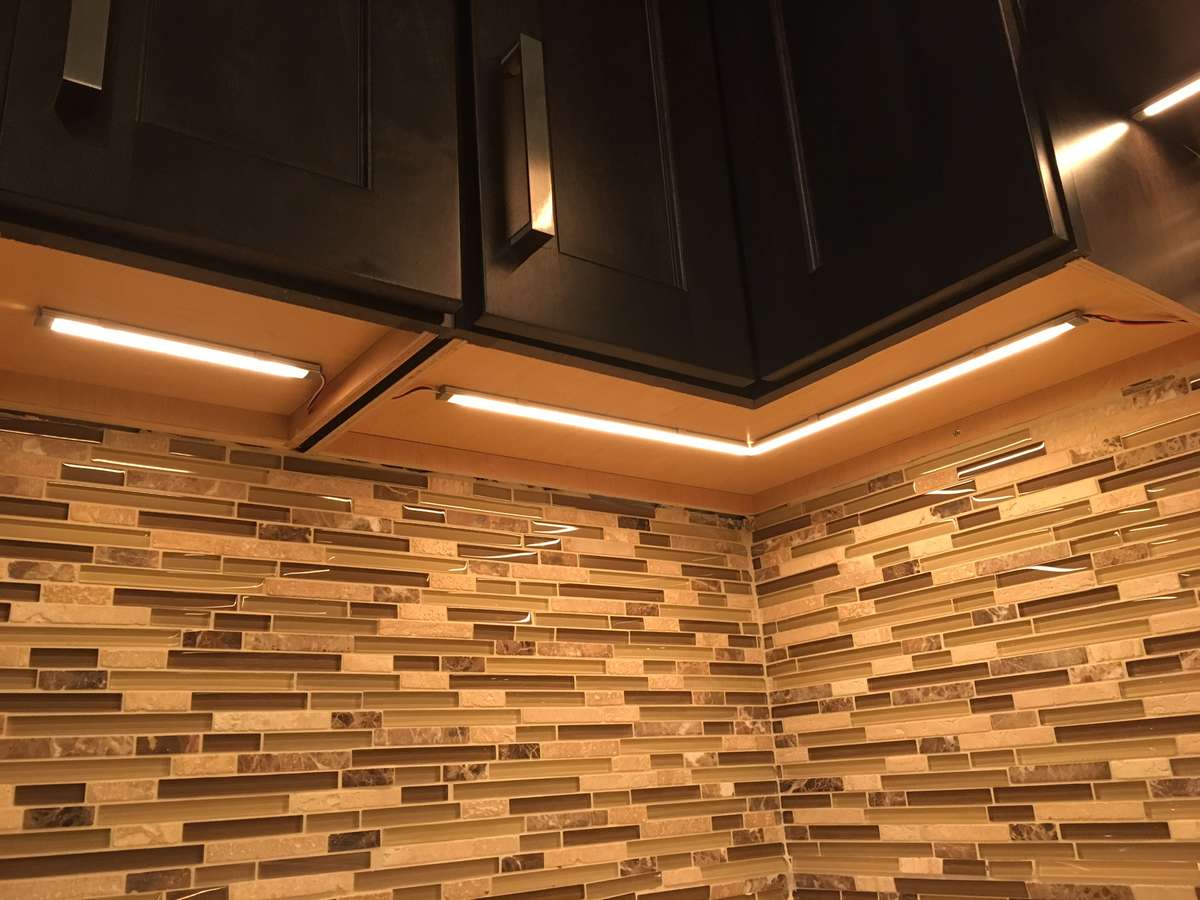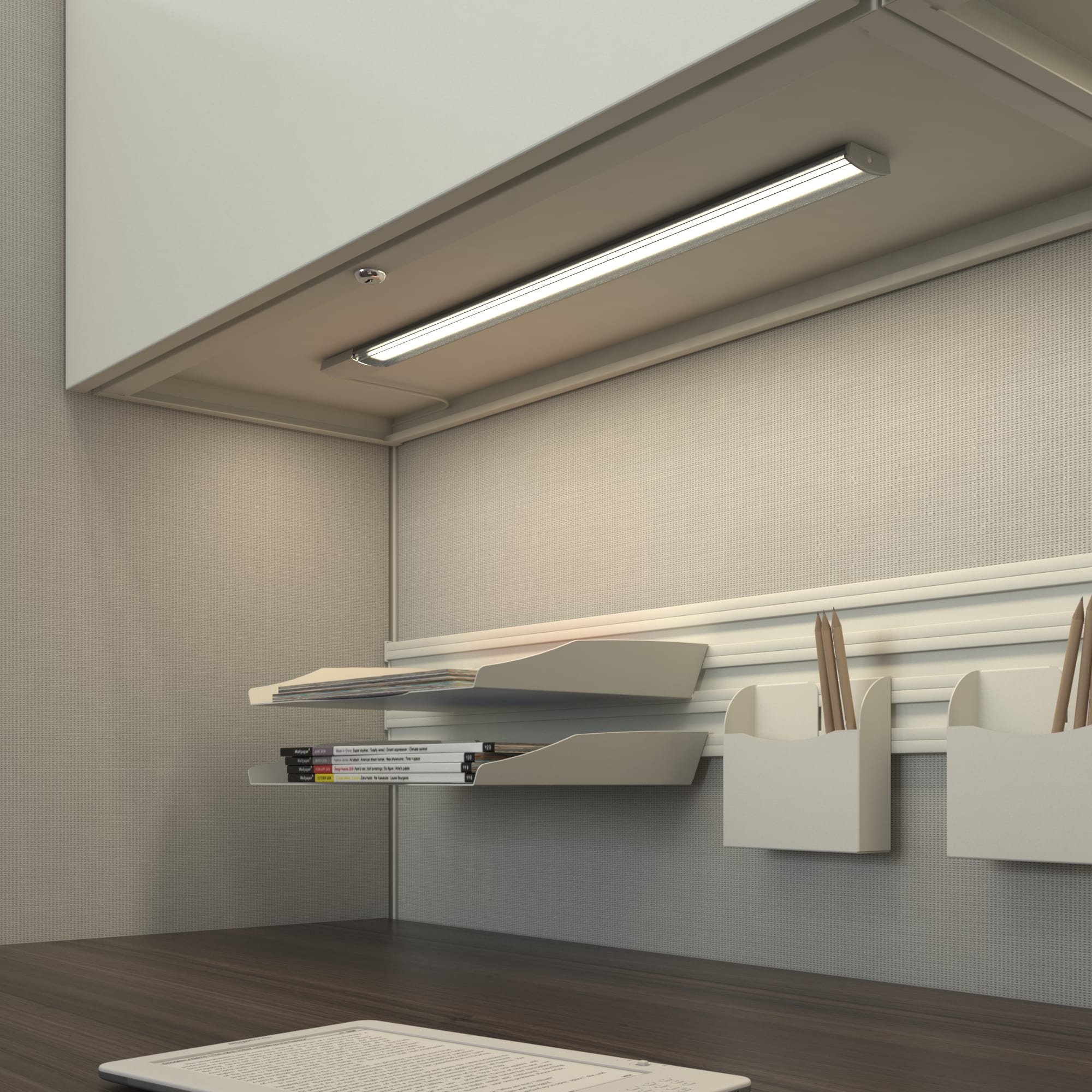Types of Top-of-Cabinet Lighting: Top Of Cabinet Lighting

Top-of-cabinet lighting is a popular choice for kitchens, as it provides both functional and aesthetic benefits. It illuminates countertops and workspaces, making it easier to prepare meals and clean up, while also adding a touch of elegance to the space. There are several different types of top-of-cabinet lighting available, each with its own unique advantages and disadvantages. Let’s explore the various types and their suitability for different kitchen styles and layouts.
Types of Top-of-Cabinet Lighting
The most common types of top-of-cabinet lighting include under-cabinet lights, puck lights, and strip lights. Each type has its own set of features and benefits that make it suitable for different applications.
Under-Cabinet Lights
Under-cabinet lights are a popular choice for kitchen lighting. They are typically mounted underneath cabinets, providing direct illumination to countertops and workspaces. They are often used in combination with other lighting sources, such as overhead lights or pendant lights, to create a well-lit kitchen.
- Advantages: Under-cabinet lights provide focused illumination on countertops and workspaces, making it easier to prepare meals and clean up. They are also energy-efficient and can be easily installed. They are available in various styles, sizes, and colors to match any kitchen décor.
- Disadvantages: Under-cabinet lights can be difficult to install if the cabinets are not already pre-wired. They may also cast shadows on the countertop if they are not positioned correctly.
Puck Lights
Puck lights are small, circular lights that are often used to provide accent lighting in kitchens. They can be mounted on the underside of cabinets, on walls, or even on ceilings. They are available in a variety of colors and finishes to match any kitchen décor.
- Advantages: Puck lights are a versatile lighting option that can be used to highlight specific areas of the kitchen, such as a countertop or a display shelf. They are also easy to install and can be used to create a warm and inviting atmosphere.
- Disadvantages: Puck lights are not as bright as other types of top-of-cabinet lighting and may not be suitable for tasks that require bright light. They can also be expensive, especially if you need to purchase multiple lights.
Strip Lights
Strip lights are long, flexible lights that can be used to provide both task lighting and accent lighting in kitchens. They are typically mounted underneath cabinets or on walls, and they can be cut to size to fit any space. They are available in a variety of colors and finishes to match any kitchen décor.
- Advantages: Strip lights are a versatile lighting option that can be used to create a variety of lighting effects. They are also energy-efficient and can be easily installed. They are available in various lengths, brightness levels, and color temperatures.
- Disadvantages: Strip lights can be more expensive than other types of top-of-cabinet lighting. They can also be difficult to install if the cabinets are not already pre-wired.
Comparing Top-of-Cabinet Lighting Types
The following table compares the features of under-cabinet lights, puck lights, and strip lights:
| Feature | Under-Cabinet Lights | Puck Lights | Strip Lights |
|---|---|---|---|
| Brightness | High | Medium | High |
| Versatility | Medium | High | High |
| Cost | Medium | High | Medium |
| Installation | Medium | Easy | Medium |
Benefits of Top-of-Cabinet Lighting

Top-of-cabinet lighting is a fantastic addition to any kitchen, offering a range of benefits that go beyond just illuminating the space. It enhances functionality, improves visibility, and adds a touch of aesthetic appeal, making your kitchen a more enjoyable and efficient space.
Improved Functionality, Top of cabinet lighting
Top-of-cabinet lighting directly illuminates the work surfaces, making it easier to prepare meals and perform tasks like chopping vegetables, kneading dough, or washing dishes. This focused illumination eliminates shadows and reduces eye strain, making your kitchen more functional and efficient.
Enhanced Visibility and Task Performance
Well-placed top-of-cabinet lighting provides ample illumination, significantly improving visibility within the kitchen. This enhanced visibility improves task performance, allowing you to see what you’re doing more clearly, reducing the risk of accidents or mistakes.
Aesthetic Benefits
Top-of-cabinet lighting can dramatically enhance the aesthetic appeal of your kitchen. The strategically placed lights create visual interest, highlighting the cabinetry and countertops, and adding a touch of elegance to the space.
Mood and Ambiance
Top-of-cabinet lighting can be used to create different moods and ambiances in your kitchen. Warm white lights create a cozy and inviting atmosphere, while cool white lights provide a more focused and functional environment. You can even incorporate dimmers to adjust the brightness according to your needs and preferences.
Installing Top-of-Cabinet Lighting

Installing top-of-cabinet lighting is a relatively simple DIY project that can significantly enhance the functionality and aesthetics of your kitchen or bathroom. With the right tools and materials, you can easily illuminate your countertops and workspaces, creating a more inviting and practical environment.
Tools and Materials
Before you begin, ensure you have the necessary tools and materials for a smooth installation process. These typically include:
- Screwdriver: A Phillips head screwdriver is essential for securing the light fixtures and mounting brackets.
- Wire strippers: These are crucial for exposing the wires for connection to the power source.
- Wire connectors: Also known as wire nuts, these are used to safely connect the wires together.
- Voltage tester: This tool helps you verify the power source is off before working on the wiring.
- Measuring tape: Essential for accurately determining the placement of the lights.
- Level: To ensure the lights are installed straight and even.
- Drill: For drilling pilot holes in the cabinets if necessary.
- Safety glasses: Protect your eyes from debris during installation.
- Top-of-cabinet lights: Choose the type and style that best suits your needs and preferences.
- Mounting brackets: These come with the lights and help secure them to the cabinets.
- Electrical tape: For securing the wire connections.
Choosing the Right Placement
Strategic placement of the lights is crucial for optimal illumination. Consider these factors:
- Work areas: Position the lights directly above areas where you frequently prepare food or work, such as countertops and sinks.
- Cabinet size and shape: Ensure the lights are positioned to adequately illuminate the entire cabinet space.
- Lighting direction: Aim the lights downward to avoid glare and create a focused beam of light.
- Switch location: Choose a convenient location for the switch, making it easily accessible for turning the lights on and off.
Wiring and Connecting the Lights
Once you’ve chosen the placement, it’s time to connect the lights to the power source. Here’s a step-by-step guide:
- Turn off the power: Before working with any electrical wiring, always ensure the power is turned off at the circuit breaker. Use a voltage tester to confirm the power is off.
- Connect the wires: Connect the wires from the lights to the power source, matching the colors (usually black to black, white to white, and ground to green or bare copper). Use wire connectors to securely join the wires.
- Secure the connections: Wrap electrical tape around the wire connections to further secure them and prevent any accidental disconnections.
- Test the lights: Once the connections are complete, turn the power back on and test the lights to ensure they are working correctly.
Top of cabinet lighting, man, it’s the bomb! You can really brighten up your kitchen, you know? But you gotta make sure you’re getting the right distance between your countertop and wall cabinets first, check out this guide for the perfect setup.
Then, once you’ve got the measurements right, you can get that sweet, sweet top of cabinet lighting that’ll make your kitchen shine!
Top of cabinet lighting can really make a space feel more sophisticated, especially if you’re going for a modern vibe. And if you’re thinking about adding a glass wall to your bathroom or bedroom, check out this website for some awesome ideas.
But anyway, back to the lighting – make sure you choose bulbs that give off the right kind of light for your space, ya know, so it doesn’t look too harsh or too dim.